Hypercar and GTP Unite: A New Era in Endurance Racing Begins
And so, we come to the dawn of a whole new era, one that promises to eclipse even the great Group C. The Le Mans Hypercars are here, and you’d better believe the hype...
Getty Images
This is it. Finally, and after so long, premier-level sports car racing is united. The same cars that race at the Daytona 24 Hours and Sebring 12 Hours in America’s IMSA Sports Car Championship can now compete at the Le Mans 24 Hours in the World Endurance Championship – and major manufacturers are flocking back. Two parallel rule books are the key: Le Mans Hypercar (LMH) allows for greater technical freedom and four-wheel drive through front-axle hybrid systems; LMDh is simpler, more contained and based around a spec rear-axle hybrid on the spine of a next-generation LMP2 chassis, yet still allows for creative expression. Both forms should be able to race on an equal basis – and crucially win thanks to a system of Balance of Performance. So who’s in, and who’s doing what in what’s known confoundingly as Hypercar in WEC and GTP in IMSA? Let’s find out as a new golden era for a united world of endurance racing begins.
Ferrari
One of the longest waits in racing history is over. Ferrari is returning to top-level prototype racing as a factory team after an absence of 50 years. Or to put it another way, half the lifetime of the Le Mans 24 Hours itself, yet it’s a race that Ferrari has won nine times.
Its comeback with the 499P LMH owes a lot to those numbers. The 50th anniversary of its last shot at outright victory with the 312PB in 1973 and the 100th birthday of the French enduro in 2023 were compelling draws when it looked at making a return. But so were rules that allow for a cost-effective entry at a fraction of what the manufacturers were spending during the LMP1 era and the freedoms that give a carmaker the chance to imbue its racer with the look of its road vehicles.
Nor was the significance of the era just about to begin lost on Ferrari and its sports car racing boss Antonello Coletta, the architect of the 499P programme. Ferrari wanted to be part of something big. So it would be fair to say that the stars aligned for the Scuderia to facilitate the biggest sports car story since Porsche ended another long absence in 2014.
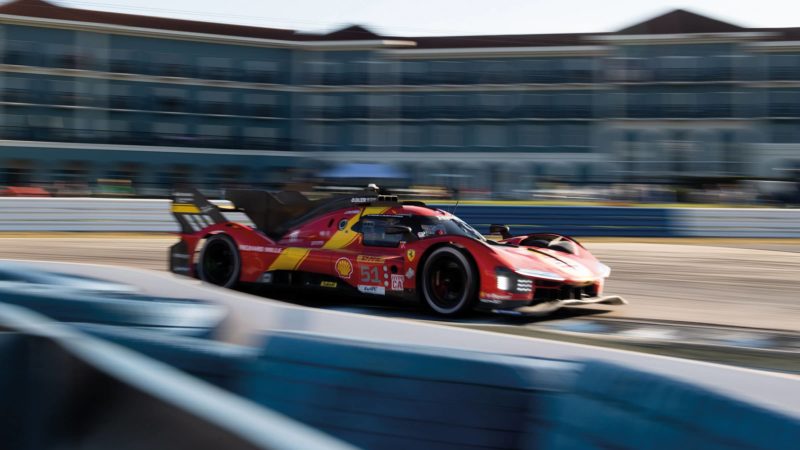
Ferrari’s new 499P enjoyed an impressive debut in Sebring
Getty Images
The historic day of Ferrari’s comeback announcement came in February 2021. The 499P – named after the capacity of one cylinder of its twin-turbo V6 – was up and running at Fiorano back in July and since then has been on a whirlwind development programme: the marque has been conscious that it has a lot of catching up to do with the manufacturers in the WEC, as well as Porsche, which has been busy testing its LMDh for a year already. It had two cars running alongside each other almost from the get-go.
The pressure will be on for Ferrari when it and its chosen partner team – AF Corse, which gained vital experience of prototype racing in LMP2 last year to smooth its step up from GT racing. And it paid off, to an extent, with the 499P scorching to pole position on its debut at Sebring. The race proved a different matter though, as the superbly-drilled Toyota team still emerged ahead. Still, Ferrari looks quick and reliable, which should be a potent combination come Le Mans.
Porsche
Porsche was the first manufacturer to put its hand up in support of LMDh and was almost certainly the first to get board approval, though not the first to commit publicly. But that commitment, announced in December 2020, means that it will be back at the top of the sports car tree only five years after it axed its LMP1 programme with the 919 Hybrid. That compares with the 15-year absence ended by the arrival in 2014 of that car, which would go on to score a hat-trick of Le Mans wins.
As an early adopter, Porsche got its LMDh out on track ahead of its rivals. A car that was subsequently christened the 963 was up and running as early as last January, giving it a six-month head start. It’s not quite what it may seem, however. Much of that time was spent debugging the off-the-shelf LMDh hybrid system produced by Bosch, Williams Advanced Engineering and Xtrac.
A key selling point of the new category for Porsche was that it could race the same car in both WEC and IMSA. It kicks off another chapter in its rich sports car racing history with a pair of two-car assaults in conjunction with Penske. A new entity called Porsche Penske Motorsport will look after the programmes from Mannheim in Germany and Mooresville, North Carolina respectively.
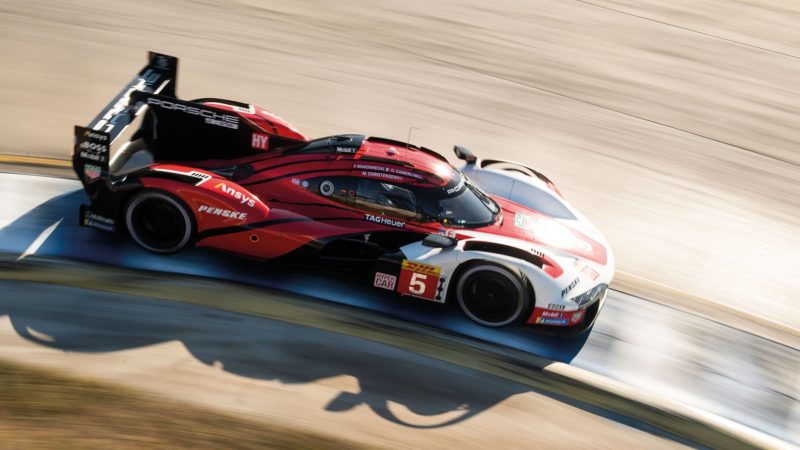
Porsche’s new 963 has yet to score big, but don’t count it out.
Penske ran Porsche’s RS Spyder LMP2 programme of 2005-08 and the V8 from that car was the starting point for the 963’s internal combustion unit. What started out as a 3.4-litre normally aspirated unit, morphed through a 4.6-litre version in the 918 Spyder plug-in hybrid road car and has now been turbocharged for the LMDh.
The chassis of a new 963, the nomenclature of which tips its hat to the all-conquering 962 Group C car, has been developed by the Canadian-based Multimatic Motorsports organisation. It was also behind the abandoned Audi LMDh, which would have been a 963 with different bodywork.
Audi canned its programme early last year, but there will still be multiple Multimatic-built cars on the grid in both WEC and IMSA. Customer cars are an integral part of the Porsche programme and there will be privateer 963s racing from early in the year. And so far, the 963 has looked a potent tool, even if luck has somewhat deserted it so far. Technical hiccups blighted it at Daytona, and the bumps of Sebring put it behind the Ferrari, Toyota and Cadillac in the WEC opener. One should probably have won the following Sebring 12 Hours, had both not been involved in an unlucky multi-car collision. there’s a lot more to come from the 963.
Toyota
The vital statistics of the four seasons in which Toyota raced alone as the only major carmaker undertaking a full season in the WEC, two in LMP1 and two in Hypercar, make for impressive reading: five Le Mans victories and a further 18 wins, as well as a clean sweep of the drivers’ and manufacturers’ titles each time. But now it gets serious for the Toyota Gazoo Racing squad. Perhaps more pertinently it has the chance to cement its sports car legacy by beating Ferrari, Porsche, et al.
Toyota is returning to the WEC with an update of the GR010 Hybrid LMH introduced at the start of 2021. It is understood to have had a new design on the drawing board but took the decision around Le Mans time in 2022 to continue with a rejig of the existing package. The upgrades for this year smack of evolution rather than revolution, with the tweaked car sprouting additional brake cooling apertures, frontal diveplanes to boost downforce, and new rear-wing endplates. Team technical head Pascal Vassellon said: “We have not been working on pure aero efficiency, [rather] aero consistency, trying to help driveability.”
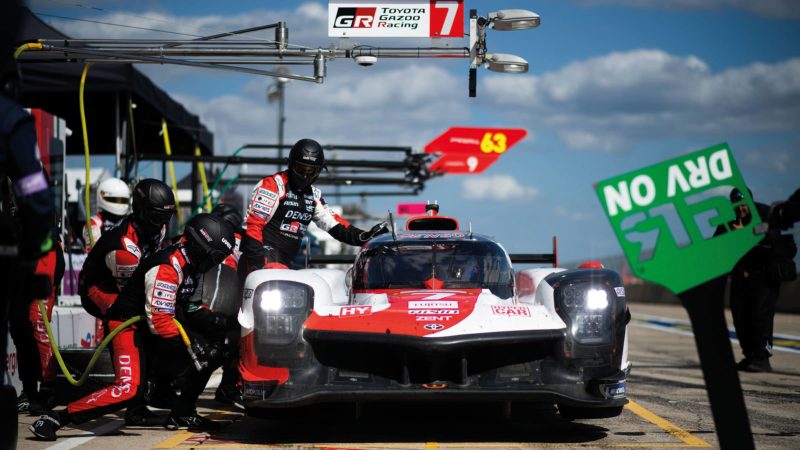
The well-drilled Toyota team is the one to beat.
Getty Images
The driver line-up is unchanged, however. José Maria López stays as part of the No7 crew that won the title in 2019/20 and ’21 after Toyota had to abandon plans to promote Nyck de Vries from his test and reserve role when he landed a Formula 1 ride with AlphaTauri.
As the reigning champion and the manufacturer with the most experience in the WEC, all eyes will be on Toyota in 2023 as it enters an 11th consecutive season in the championship. The BoP might equal things up in terms of car performance, but teamwork, strategy, reliability and, crucially, getting the most out of a set of tyres through a double stint, lay outside its scope. At Sebring, Toyota’s prowess became clear as both its cars ran like clockwork, without a single error, to emerge as clear winners. It is this sort of organisation that its rivals will have to match to beat what has become the best endurance racing outfit of modern times.
Peugeot
Peugeot shocked many when it revealed a show car in the summer of ’21 without a conventional rear wing, and then surprised quite a few when it began racing a car known as the 9X8, sans wing last year. The French manufacturer exploited the freedoms in the Le Mans Hypercar rules to come up with something outside of the box and insists that the concept is sound.
The French manufacturer didn’t look entirely convincing on its return to top-flight sports car racing after an absence of more than 10 years. The bosses at Peugeot Sport always stressed that 2022 was a learning year ahead of the big push this season as it aims to repeat the Le Mans successes of its 905 3.5-litre Group C car of 1992 and ’93 and the 908 HDi LMP1 turbodiesel in 2009.
The car never made it onto the podium in the three races it undertook from Monza on, nor did one of the cars get to the finish without suffering some kind of technical delay. It would be wrong to say the car wasn’t quick, especially after a BoP handout for the Bahrain finale, witness Paul di Resta’s front-row starting slot and fastest race lap for Jean-Éric Vergne. But the jury is out on its pace over a double stint on the tyres.
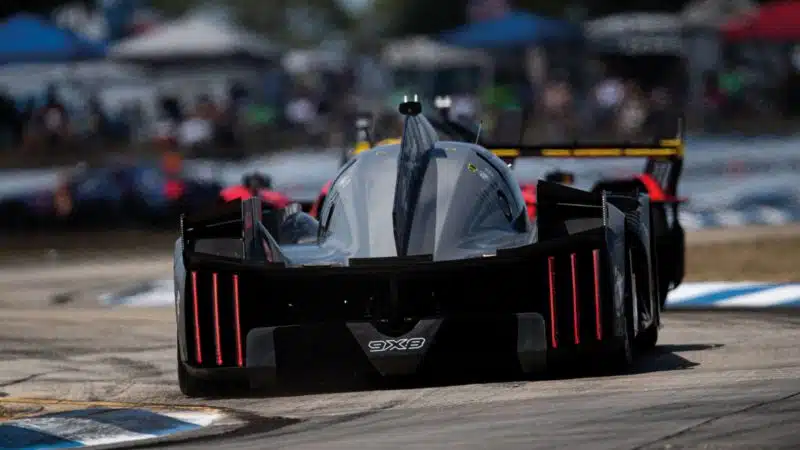
Peugeot’s radical 9X8.
Getty Images
Peugeot chose not to join the WEC until Monza in July, though it would be wrong to call it a delay. When it announced its LMH in November 2019, the deadline was for the start of the 2022/23 season (the series was running to the winter-series format at the time). That would have meant a late-summer debut, so it was arguably ahead of schedule.
Peugeot opted for six months of testing prior to debut in the knowledge that once the 9X8 was homologated, its specification would be largely fixed for the lifespan of the car. The LMH rules allow only five ‘evo joker’ upgrades made in the name of performance.
Peugeot conceded that there was work to be done, but that there was a plan in place as it strived to take a step forward. Problem is, we’ve yet to see any step. The team eschewed the Sebring Prologue test, preferring to continue testing in Europe and in doing so essentially wrote off the opening round. The bumps at Sebring were never going to suit a ground-effect-style car, but even so it was embarrassing to see one car limp out before the race start with gearbox issues, and the second hugely delayed by electrical gremlins. More is expected here, so is it too early to use the word ‘crisis’?
Cadillac
Cadillac was the ‘winningest’ marque — in American parlance — during the DPi era of 2017-22 and General Motors always looked likely to continue its participation in IMSA under the new rules. The big news, though, when the General Motors brand confirmed its programme in September ’21 was that it would also be contesting the WEC and bidding for Le Mans victory for the first time since its Northstar LMP of 2000-02. A single entry will be fielded in the WEC by the Chip Ganassi-run Cadillac Racing squad, which will also run one LMDh in IMSA alongside a car from Action Express. Cadillac will be filing entries for both the IMSA cars to go to Le Mans.
Cadillac has maintained its relationship with Italian constructor Dallara for its new prototype, which is known as the V-LMDh. Underneath the aggressive styling is a 5.5-litre normally aspirated V8. It’s the same capacity and architecture as the power unit in its DPi-V.R, though it is billed as all new.
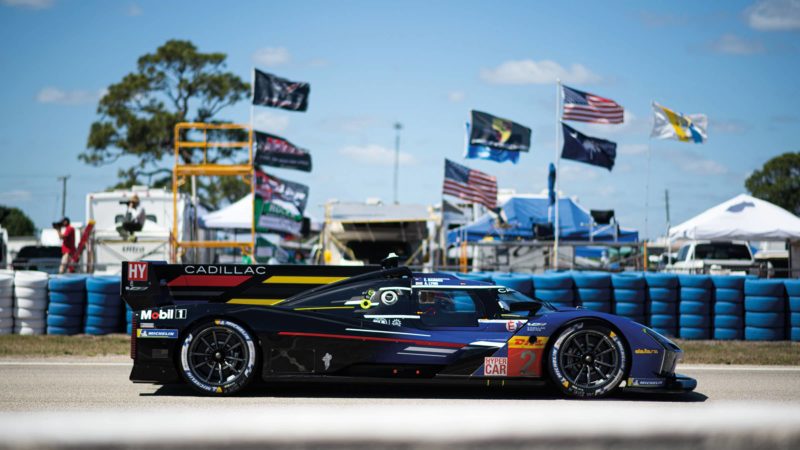
Cadillac looks strong early on
Getty Images
Like Acura and BMW, the new car was up and running in the summer, so six months after the Porsche. Unlike the other LMDhs, the V-LMDh began testing in North America and has continued its programme, with two cars, on home ground. Third place on its debut at Daytona wasn’t bad, but arguably its WEC debut was even better, running consistently on the tail of both the Toyota and Ferrari Hypercars, and winding up fourth overall, ahead of the Porsches. This should be a team to keep an eye on this year, especially with an expanded line-up from Spa onwards.
Glickenhaus
The fledgling US carmaker punched above its weight with its 007 LMH in 2022. The car finished on the podium at Le Mans last year and would almost certainly have won the Monza WEC round but for a turbo failure. Not a bad showing for the minnow of the WEC field. Yet for all its successes, Glickenhaus’ programme with its Pipo-engined non-hybrid developed in Italy by Podium Advanced Technologies has been in a state of flux since last summer when it ducked out of the WEC with two races to go. Jim Glickenhaus has been candid about the need for sponsorship or partnership with a customer team if it is continue. Only in mid-December did he confirm that he would be back for 2023.
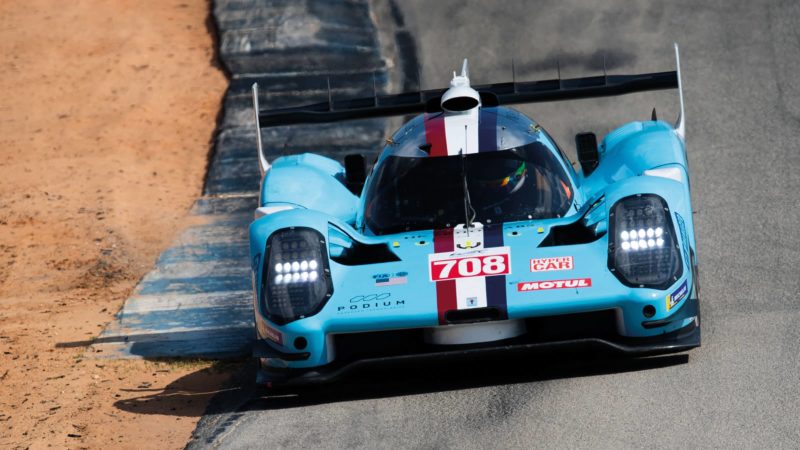
Glickenhaus hasn’t enjoyed an easy winter, or start to the season. But its 007 LMH was a fan favourite last year
All he had said as 2022 drew to a close was that Glickenhaus would race with a minimum of one car, most likely fielded by the Podium-run factory team. He hinted that there could be more than one 007 on the grid and that talks with potential partners were ongoing. He wouldn’t be drawn on whether that might involve an extra car at Le Mans in June.
Glickenhaus will need to contest all seven races. The ACO is being firm on what it expects from its entrants in the Hypercar class and that is a participation in all rounds. Last year’s situation when it cut Glickenhaus a bit of slack to skip races isn’t likely to be repeated.
Glickenhaus has also outlined a desire to upgrade its LMH design. The team concedes that it is already too late to have them in place for the start of this season, but upgrades could arrive after Le Mans in June on the 007. A single car was wheeled out and went straight to Sebring, but failed to shine as the team’s lack of pre-season running showed. It qualified off the pace and then stopped with engine electrical issues early in the event. It’s a shame to see one of the most popular additions to the grid for quite some time endure such a tough start, but, like Le Mans itself, better things are on the horizon.
Originally published in Motor Sport, February 2023